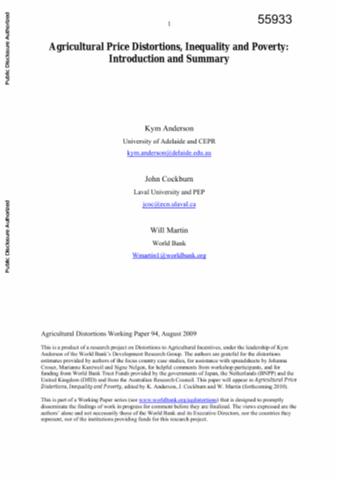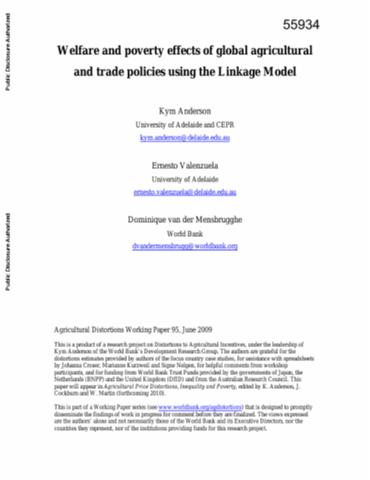The World Bank is a vital source of financial and technical assistance to developing countries around the world. We are not a bank in the ordinary sense but a unique partnership to reduce poverty and support development. The World Bank Group has two ambitious goals: End extreme poverty within a generation and boost shared prosperity.
- To end extreme poverty, the Bank's goal is to decrease the percentage of people living on less than $1.25 a day to no more than 3% by 2030.
- To promote shared prosperity, the goal is to promote income growth of the bottom 40% of the population in each country.
The World Bank Group comprises five institutions managed by their member countries.
The World Bank Group and Land: Working to protect the rights of existing land users and to help secure benefits for smallholder farmers
The World Bank (IBRD and IDA) interacts primarily with governments to increase agricultural productivity, strengthen land tenure policies and improve land governance. More than 90% of the World Bank’s agriculture portfolio focuses on the productivity and access to markets by small holder farmers. Ten percent of our projects focus on the governance of land tenure.
Similarly, investments by the International Finance Corporation (IFC), the World Bank Group’s private sector arm, including those in larger scale enterprises, overwhelmingly support smallholder farmers through improved access to finance, inputs and markets, and as direct suppliers. IFC invests in environmentally and socially sustainable private enterprises in all parts of the value chain (inputs such as irrigation and fertilizers, primary production, processing, transport and storage, traders, and risk management facilities including weather/crop insurance, warehouse financing, etc
For more information, visit the World Bank Group and land and food security (https://www.worldbank.org/en/topic/agriculture/brief/land-and-food-security1
Resources
Displaying 4711 - 4715 of 4907Agricultural Price Distortions, Inequality, and Poverty
Reforms in recent decades have sharply reduced the distortions affecting agriculture in developing countries, particularly by cuts to agricultural export taxes and by some reductions in government assistance to agriculture in high-income countries, but international trade in farm products continues to be far more distorted than trade in nonfarm goods. This paper summarizes a series of empirical studies that focus on the effects of the remaining distortions to world merchandise trade for poverty and inequality, especially in developing countries.
Agricultural Activities, Water, and Gender in Tajikistan's Rural Sector
This social assessment (SA) was conducted under the Fergana Valley Water Resources Management Project (FVWRMP), which is providing assistance to the Government of Tajikistan to address irrigation and drainage deficiencies in Eastern Sughd. The main SA objectives were to understand how prevailing structures of water provision, land reforms, and gender relations impact rural livelihoods; to analyze experiences in establishing inclusive Water Users Associations (WUAs); and to provide recommendations to FVWRMP with the aim of enhancing its programs.
Timor-Leste
The Country Environmental Analysis (CEA) for Timor-Leste identifies environmental priorities through a systematic review of environmental issues in natural resources management and environmental health in the context of the country's economic development and environmental institutions. Lack of data has been the main limitation in presenting a more rigorous analysis. Nevertheless, the report builds on the best available secondary data, presents new data on the country's wealth composition, and derives new results on the costs of water and air pollution.
The Poverty Impacts of Global Commodity Trade Liberalization
This paper examines the poverty impacts of global merchandise trade reform by looking at a wide range of developing countries in Africa, Asia and Latin America. Overall, the authors find that trade reform tends to reduce poverty primarily through the inclusion of agricultural components. The majority of developing country sample experiences small poverty increases from non-agricultural reforms.
Welfare and Poverty Effects of Global Agricultural and Trade Policies Using the Linkage Model
This paper analyzes the economic effects of agricultural price and merchandise trade policies around the world as of 2004 on global markets, net farm incomes, and national and regional economic welfare and poverty, using the global economy wide Linkage model, new estimates of agricultural price distortions for developing countries, and poverty elasticity's approach. It addresses two questions: to what extent are policies as of 2004 still reducing rewards from farming in developing countries and thereby adding to inequality across countries in farm household incomes?










